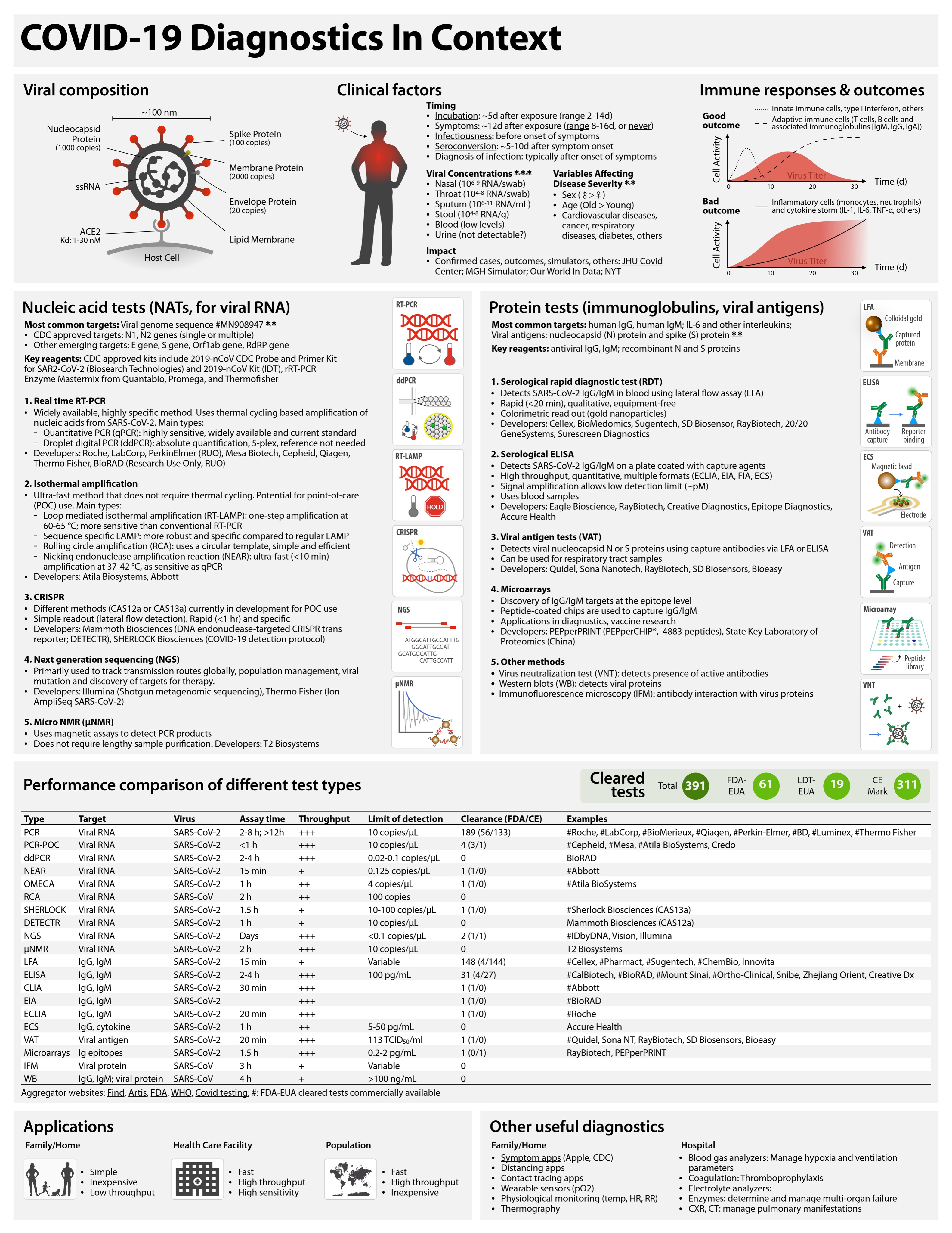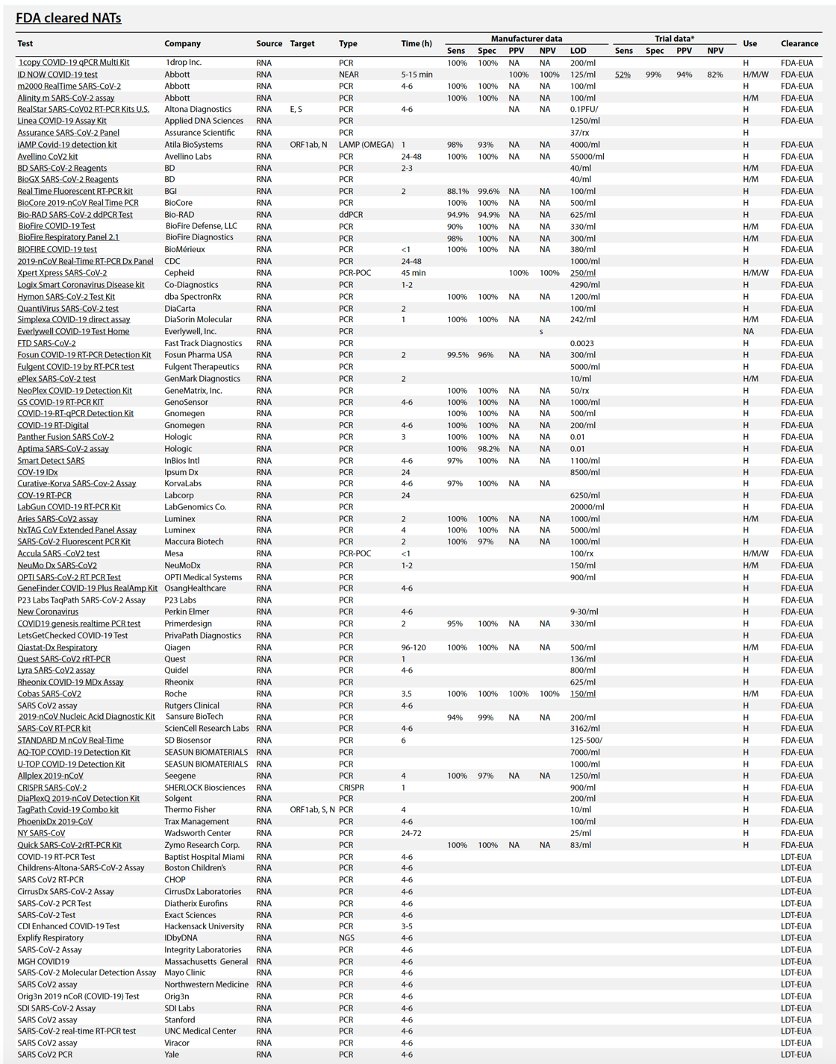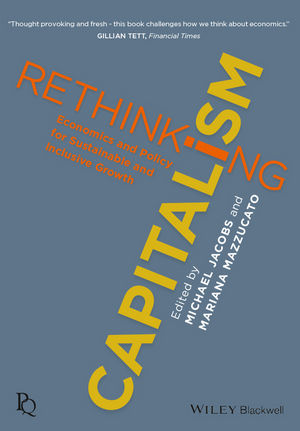‘The Joy of the Discovery’: An Interview with Jennifer Doudna
11 de juny 2020
Why CRISPR is a breakthrough
Programming life: An interview with Jennifer Doudna
‘The Joy of the Discovery’: An Interview with Jennifer Doudna
‘The Joy of the Discovery’: An Interview with Jennifer Doudna
10 de juny 2020
Precision medicine, here and now
Great article by David Cutler. The time for the returns of precision medicine has arrived in his opinion.
Precision medicine raises hopes for patients and fears for those who try to ride herd on health care spending. Will patients finally live longer and healthier lives? Will society be able to afford it? Surprisingly, at this point, personalized medicine has had less effect on both health and medical spending than either its strongest backers hoped or its most apprehensive actuaries feared.Albeit,
To date, total spending on anticancer drugs has been relatively modest. Although inflation-adjusted spending on anticancer drugs increased by $30 billion between 2011 and 2018, this is only 6% of the total increase in personal health care spending over the period. Given that administrative expenses cost an estimated 4 times the amount spent on anticancer drugs, one should be cautious about focusing excessively on the cost of precision medicine.This is a US based article, we need some estimates of our health system.
A better metric than total spending is cost effectiveness: do the benefits of the drugs outweigh the cost? The “drug abacus” tool developed by Memorial Sloan Kettering Cancer Center, which evaluates the cost-effectiveness of 52 anticancer drugs approved between 2001 and 2013, estimates that only a handful of new drugs are worth the cost at conventional valuations of life. If anticancer drugs were priced based on cost-effectiveness criteria, spending would fall by 30%.
Hopper
09 de juny 2020
Regulating voluntary health insurance
La regulació de l'assegurança voluntària de salut
Market inefficiencies can be eased with proper regulation. In a specific issue of Revista Economica de Catalunya, you'll find an article that I've written on the topic.
There is a specific and actionable proposal to improve the current situation.
Market inefficiencies can be eased with proper regulation. In a specific issue of Revista Economica de Catalunya, you'll find an article that I've written on the topic.
There is a specific and actionable proposal to improve the current situation.
Voluntary insurance in Catalonia covers 26% of citizens, possibly the most widely used duplicate insurance in Europe. Given its relevance, the regulator has to decide whether to consider the set of market failures shown in this article and act or, in contrast, put it to one side and watch its impact increase over time. For now, it is clear that government has chosen the second option.I can't summarise all details here. I suggest a close look at the article and the remaining ones in the same issue.
Considering that health is such a highly valued asset individually, surely the public deserves a satisfactory response.
Or watch this video:
08 de juny 2020
Covid-19 testing landscape
COVID-19 diagnostics in context
This is the best summary of current supply of diagnostic tests for Covid-19:
Table 1 Performance comparison of different test types.
Throughput is determined by process type and assay time. In general, automated plate-based assays have higher daily throughputs. Hashtag (#) indicates example systems that have received FDA emergency use authorization (FDA-EUA). See https://csb.mgh.harvard.edu/covid to access continuously updated information. PCR, polymerase chain reaction; PCR-POC, PCR–point-of-care; ddPCR, digital droplet PCR; NEAR, nicking endonuclease amplification reaction; RCA, rolling circle amplification; SHERLOCK, specific high-sensitivity enzymatic reporter; DETECTR, DNA endonuclease-targeted CRISPR transreporter; NGS, next-generation sequencing; μNMR, micro–nuclear magnetic resonance; LFA, lateral flow assay; ELISA, enzyme-linked immunosorbent assay; CLIA, chemiluminescence immunoassay; EIA, enzyme immunoassay; ECLIA, electrochemiluminescence immunoassay; ECS, electrochemical sensing; VAT, viral antigen assay; IFM, immunofluorescence microscopy; WB, Western blot.
This is the best summary of current supply of diagnostic tests for Covid-19:
COVID-19 tests can be grouped as nucleic acid, serological, antigen, and ancillary tests, all of which play distinct roles in hospital, point-of-care, or large-scale population testing.Eric Topol says:
Table 1 summarizes the existing and emerging tests, current at the time of writing (May 2020). A continuously updated version of this table is available at https://csb.mgh.harvard.edu/covid
There are now *88* @US_FDA cleared (by EUA) #COVID19 tests so far. Their false negative rates range from 10-48% (by post-release reports).I agree.
Might be better to have less tests, more accuracy, with faster turnaround
Table 1 Performance comparison of different test types.
Throughput is determined by process type and assay time. In general, automated plate-based assays have higher daily throughputs. Hashtag (#) indicates example systems that have received FDA emergency use authorization (FDA-EUA). See https://csb.mgh.harvard.edu/covid to access continuously updated information. PCR, polymerase chain reaction; PCR-POC, PCR–point-of-care; ddPCR, digital droplet PCR; NEAR, nicking endonuclease amplification reaction; RCA, rolling circle amplification; SHERLOCK, specific high-sensitivity enzymatic reporter; DETECTR, DNA endonuclease-targeted CRISPR transreporter; NGS, next-generation sequencing; μNMR, micro–nuclear magnetic resonance; LFA, lateral flow assay; ELISA, enzyme-linked immunosorbent assay; CLIA, chemiluminescence immunoassay; EIA, enzyme immunoassay; ECLIA, electrochemiluminescence immunoassay; ECS, electrochemical sensing; VAT, viral antigen assay; IFM, immunofluorescence microscopy; WB, Western blot.
| Type | Target | Virus | Assay time | Process type | FDA-EUA | Examples |
| PCR | Viral RNA | SARS-CoV-2 | 2–8 hours; >12 hours | Plate | 56 | #Roche, #LabCorp, #BioMerieux, #Qiagen, #Perkin-Elmer, #Becton Dickinson, #Luminex, #Thermo Fisher, others |
| PCR-POC | Viral RNA | SARS-CoV-2 | <1 hour="" td=""> | Cartridge | 2 | #Cepheid, #Mesa, Credo |
| ddPCR | Viral RNA | SARS-CoV-2 | 2–4 hours | Manual | 1 | #BioRAD |
| NEAR | Viral RNA | SARS-CoV-2 | 15 min | Cartridge | 1 | #Abbott |
| OMEGA | Viral RNA | SARS-CoV-2 | 1 hour | Plate | 1 | #Atila BioSystems |
| RCA | Viral RNA | SARS-CoV | 2 hours | 0 | ||
| SHERLOCK | Viral RNA | SARS-CoV-2 | 1.5 hours | Kit | 1 | #Sherlock Biosciences (CAS13a) |
| DETECTR | Viral RNA | SARS-CoV-2 | 1 hour | Kit | 0 | Mammoth Biosciences (CAS12a) |
| NGS | Viral RNA | SARS-CoV-2 | Days | 1 | #IDbyDNA, Vision, Illumina | |
| μNMR | Viral RNA | SARS-CoV-2 | 2 hours | Cartridge | 0 | T2 Biosystems |
| LFA | IgG, IgM | SARS-CoV-2 | 15 min | Cartridge | 3 | #Cellex, #Sugentech, #ChemBio, Innovita |
| ELISA | IgG, IgM | SARS-CoV-2 | 2–4 hours | Plate | 4 | #Mount Sinai, #Ortho-Clinical (2), #EUROIMMUN US Inc., BioRAD, Snibe, Zhejiang orient, Creative Dx |
| CLIA | IgG, IgM | SARS-CoV-2 | 30 min | Cartridge | 2 | #Abbott, #DiaSorin |
| EIA | IgG, IgM | SARS-CoV-2 | 2 hours | Plate | 1 | #BioRAD |
| MIA | IgG, IgM | SARS-CoV-2 | Plate | 1 | #Wadsworth Center | |
| ECLIA | IgG, IgM | SARS-CoV-2 | 20 min | Plate | 1 | #Roche |
| ECS | IgG, cytokine | SARS-CoV-2 | 1 hour | Cartridge | 0 | Accure Health |
| VAT | Viral antigen | SARS-CoV-2 | 20 min | Cartridge | 1 | #Quidel, Sona NT, RayBiotech, SD Biosensors, Bioeasy |
| Microarrays | Ig epitopes | SARS-CoV-2 | 1.5 hours | Plate | 0 | RayBiotech, PEPperPRINT |
| IFM | Viral protein | SARS-CoV | 3 hours | Manual | 0 | |
| WB | IgG, IgM; viral protein | SARS-CoV | 4 hours | Manual | 0 |
07 de juny 2020
Intercepting symbiomes
Intercepting pandemics through genomics
It makes sense:
It makes sense:
There is an urgent need to establish a global, genomic-based biosurveillance platform, a developmentwhich would be of immense value to biosecurity, biodefense, and the economy. If implemented, this“pandemic interception system” would hugely advance our understanding of the natural world. Three major research programs are poised to support this effort: BIOSCAN, the Earth BioGenome Project (EBP), and the Global Virome Project (GVP). Each of these global programs is now working to develop approaches in comparative genomics that are needed to discover all species and to reveal their interactions. The diversity of infectious agents involved in host–pathogen interactions needs immediate clarification, especially with regard to those agents that transfect phylogenetically divergent lineages.
A pandemic interception system needs to be based on detailed knowledge of symbiomes, which are the constellations of organisms that interact with all multicellular species. Efforts to describe the structure of symbiomes are motivated by the fact that parasites, parasitoids, and microbes can devastate host populations, especially those that are evolutionarily naïve. Symbiome complexity is governed by rules.
Daido Moriyama
06 de juny 2020
Tackling COVID-19 beyond testing
How We Can Tackle the COVID-19 Crisis Beyond Testing
If you wear a smartwatch or fitness tracker, you can play a role in monitoring the spread of COVID-19 and other viral diseases like the flu. In this Front Row lecture, Eric Topol, MD, and Jennifer Radin, PhD, discuss how they’re calling on the public to share data from wearable devices for a study that’s helping scientists flag the early onset of contagious respiratory illnesses. By harnessing this key data—including heart rates, sleep and activity levels—from hundreds of thousands of individuals, they seek to improve real-time disease surveillance.
If you wear a smartwatch or fitness tracker, you can play a role in monitoring the spread of COVID-19 and other viral diseases like the flu. In this Front Row lecture, Eric Topol, MD, and Jennifer Radin, PhD, discuss how they’re calling on the public to share data from wearable devices for a study that’s helping scientists flag the early onset of contagious respiratory illnesses. By harnessing this key data—including heart rates, sleep and activity levels—from hundreds of thousands of individuals, they seek to improve real-time disease surveillance.
05 de juny 2020
Regulating the healthcare bazaar
What to Do about Health-Care Markets?
Policies to Make Health-Care Markets Work
Martin Gaynor in the Brookings Report proposes three types of policy reforms that would increase competition in health care and improve market functioning:
Policies to Make Health-Care Markets Work
Martin Gaynor in the Brookings Report proposes three types of policy reforms that would increase competition in health care and improve market functioning:
- Reduce or eliminate policies that encourage consolidation or that impede entry and competition.
- Strengthen antitrust enforcement so that federal and state antitrust enforcement agencies can act effectively to prevent and remove harms to competition.
- Create an agency responsible for monitoring and overseeing health-care markets, and give that agency the authority to flexibly intervene when markets are not working
Well, these are only 3 issues, the report highlights the details into the implementation. And if you want to know how far healthcare is from competitive markets, you must start understanding markets. There is a book that may help as a useful guide to start:
04 de juny 2020
Forming beliefs
The Value of Beliefs
Relevant article with key messages:
Relevant article with key messages:
We construct our beliefs to meet two sometimes conflicting goals: forming accurate beliefs to inform our decisions and forming desirable beliefs that we value for their own sake. In this NeuroView, we consider emerging neuroscience evidence on how the brain motivates itself to form particular beliefs and why it does so.
Our beliefs are fundamental parts of what makes each of us unique. They are a major cause of both harmony and discord; shared beliefs bring people together, while divergent beliefs can spark revolutions. In this age of the internet and social media, the ability of beliefs to both invigorate and polarize is more apparent than ever. This raises a fundamental question: how do people arrive at their beliefs? A traditional approach to studying beliefs is grounded on the idea that people build an internal model of the world for the purpose of informing their decisions to help them achieve external goals, such as gaining rewards and avoiding punishments.
In particular, individuals often prefer to hold positive beliefs and hold beliefs with high certainty. To achieve this, changes in information seeking and belief updating are motivated by tapping into the same circuits that drive primary reward seeking. However, unlike primary rewards such as food, beliefs on their own do not directly promote survival.
03 de juny 2020
The narrative of pandemics (2)
Información científica especializada, información pública y medios de comunicación durante la crisis del coronavirus
Today you'll find our article on communication in pandemic times in Blog Economía y Salud AES, how markets of attention and radical uncertainty drive current situation.
Today you'll find our article on communication in pandemic times in Blog Economía y Salud AES, how markets of attention and radical uncertainty drive current situation.
David Hockney
02 de juny 2020
Public Health ethics
Ética en, para y de la Salud Pública
From Andreu Segura, a good article on public health ethics:
Modern public health has not paid much attention to ethics until very recently. Perhaps because a large part of their functions have been developed in public administrations, which are subject to regulations and laws and not to the deontological standards of professional corporations, but also because having such a lovely formal purpose -- health promotion and protection-- it seems that it is not necessary to go to ethics to assess their activities. As it happened in the time of Enlightened Absolutism. An arrogant attitude that could explain popular distrust of some of their recommendations. One obstacle that the application of ethics could overcome.
David Hockney
01 de juny 2020
In memoriam: Adam Wagstaff, a giant of health economics
The Virtual Legacy of Adam Wagstaff in Health Economics: So Much More than Old Wine in New Bottles
On 10 May 2020, the health economics community lost one of its giants with the death of Adam Wagstaff. During his career, Adam made tremendous contributions to the development and analysis of health care financing policies, with a focus on both health equity and efficiency in countries around the world. The huge volume of his work is partially reflected through articles and citations to his work published in Health Economics. The Health Economics Editorial Board, in conjunction with Wiley, prepared this Virtual Issue in Adam's honor. The issue starts with remembrances of Adam by Eddy van Doorslaer, a long-time friend and colleague. The issue also contains, in chronological order, links to the 28 Health Economics articles which Adam wrote or co-authored. We hope this compilation increases awareness of the brilliance of a leading health economist whose contributions were cut short by most unfortunate illness.
Hopper
31 de maig 2020
Can capitalism be reimagined? (4)
Rethinking Capitalism lectures
From UCL Institute for Innovation and Public Purpose;
From UCL Institute for Innovation and Public Purpose;
Western Capitalism is in crisis, with falling productivity, investment and living standards, widening inequality, financial instability and the growing threat of climate change. This undergraduate module provides students with a critical perspective on these ‘grand-challenges’ and introduces them to new approaches to economics and policy which challenge standard thinking.
The module draws on the book “Rethinking Capitalism”, edited by Mariana Mazzucato (Director of IIPP) and Michael Jacobs (Visiting fellow in the UCL School of Public Policy). It features guest academic lectures from some of the chapter authors which can be viewed below. These academic lectures are combined with presentations by policy makers working at the frontline of the issues under discussion
30 de maig 2020
29 de maig 2020
Healthcare built around you?
Bezonomics
How Amazon Is Changing Our Lives, and What the World's Companies Are Learning from It
Amazon Care
Atul Gawande departure from Haven, the alliance between Amazon, JP Morgan and Berkshire for developing health services for their workers has created uncertainty about what is really Amazon going to do.
Anyway, if you look at the web you can check what is already doing for their employees: Amazon Care. Here you'll find the FAQS. Up to now everybody was thinking about health goods and businesses that Amazon could provide (details in this report). Right now they have started a pilot of health system that may be developed anywhere. A platform business, that starts slowly with and app and a physicians group.
If you want to undestand what Amazon really means for the economy (and for healthcare) than a new book can provide you some answers: Bezonomics.
How Amazon Is Changing Our Lives, and What the World's Companies Are Learning from It
Amazon Care
Atul Gawande departure from Haven, the alliance between Amazon, JP Morgan and Berkshire for developing health services for their workers has created uncertainty about what is really Amazon going to do.
Anyway, if you look at the web you can check what is already doing for their employees: Amazon Care. Here you'll find the FAQS. Up to now everybody was thinking about health goods and businesses that Amazon could provide (details in this report). Right now they have started a pilot of health system that may be developed anywhere. A platform business, that starts slowly with and app and a physicians group.
If you want to undestand what Amazon really means for the economy (and for healthcare) than a new book can provide you some answers: Bezonomics.
The global business world will eventually divide into two camps—those who adopt their own version of Bezonomics, and those who don’t. Alphabet, Facebook, Netflix, Alibaba, JD.com, and Tencent have built huge, powerful businesses based on their ability to collect and analyze data, and keep applying those learnings to make their businesses smarter and their offerings to customers more attractive. In their pursuit of AI-driven technologies such as voice and facial recognition, the Internet of Things, and robotics, they’re creating automated business models that will crush traditional businesses that fail to adapt to this new world. And the emergence of 5G technology, which will replace our current digital networks, will only widen the gap. Experts predict that this next generation of Internet connectivity will be as much as a hundred times faster than today’s web.A must read. In my opinion, what really brings Bezonomics to healthcare is the largest expression of commercialism. In other words, healthcare built around excedent appropriation, not around the patient. If this is so (and Atul Gawande departure is a signal) then we all have to stand up against this model and create value and platforms based on professionalism.
The impact that Bezonomics is having on society is just as profound. Some of the big tech companies are sowing discord with fake news, interfering with elections, and violating personal privacy. As Apple CEO Tim Cook put it: “If you’ve built a chaos factory, you can’t dodge responsibility for the chaos.” The global wealth gap has become so out of kilter that politicians in America and Europe have singled out Amazon and other big tech companies for blame. These wealth-creation machines have become so efficient at creating riches for their top employees and shareholders that they’re likely to engender more public outrage and become easy targets for regulators—perhaps in some cases even be broken up.
Subscriure's a:
Missatges (Atom)











